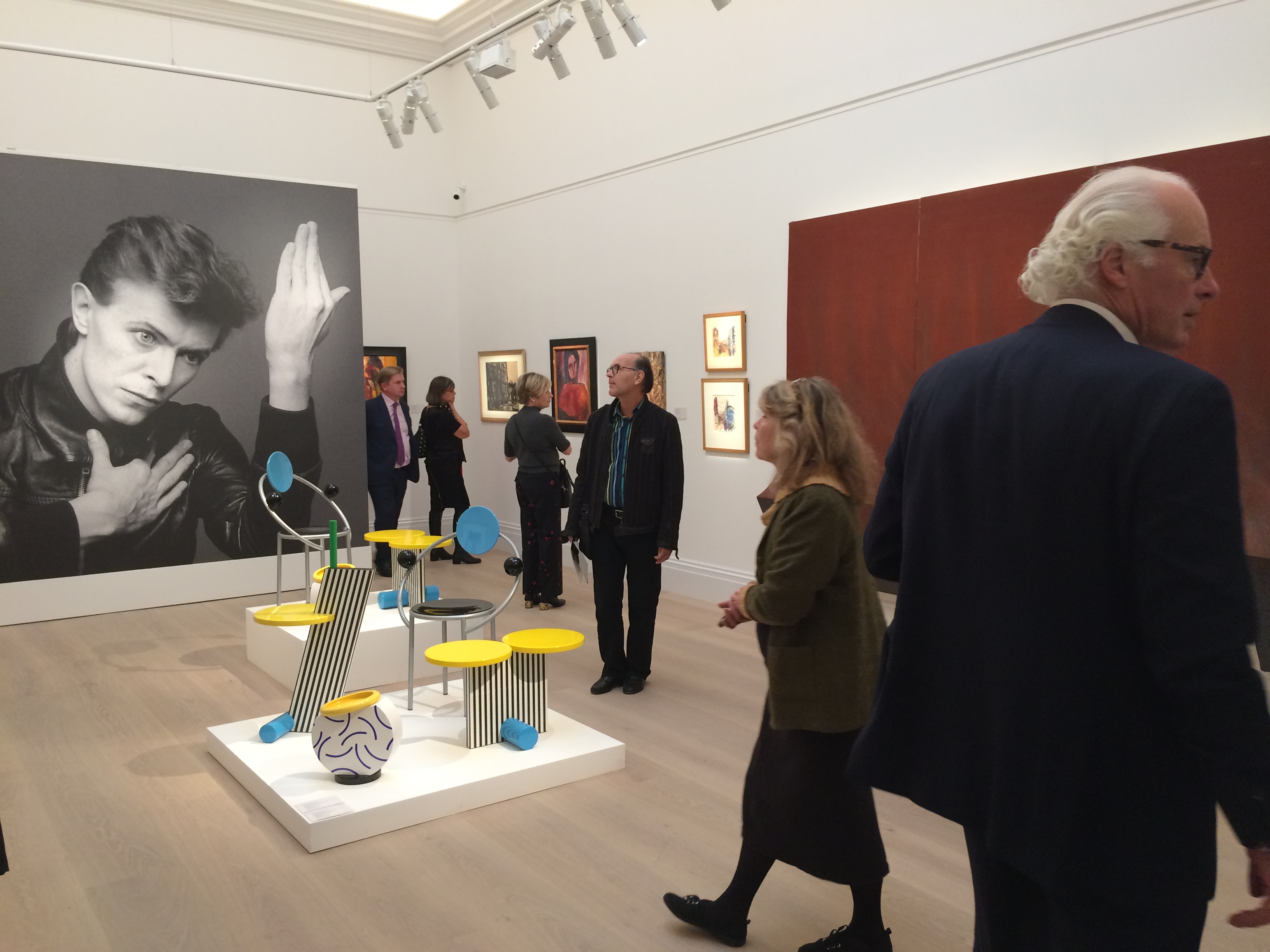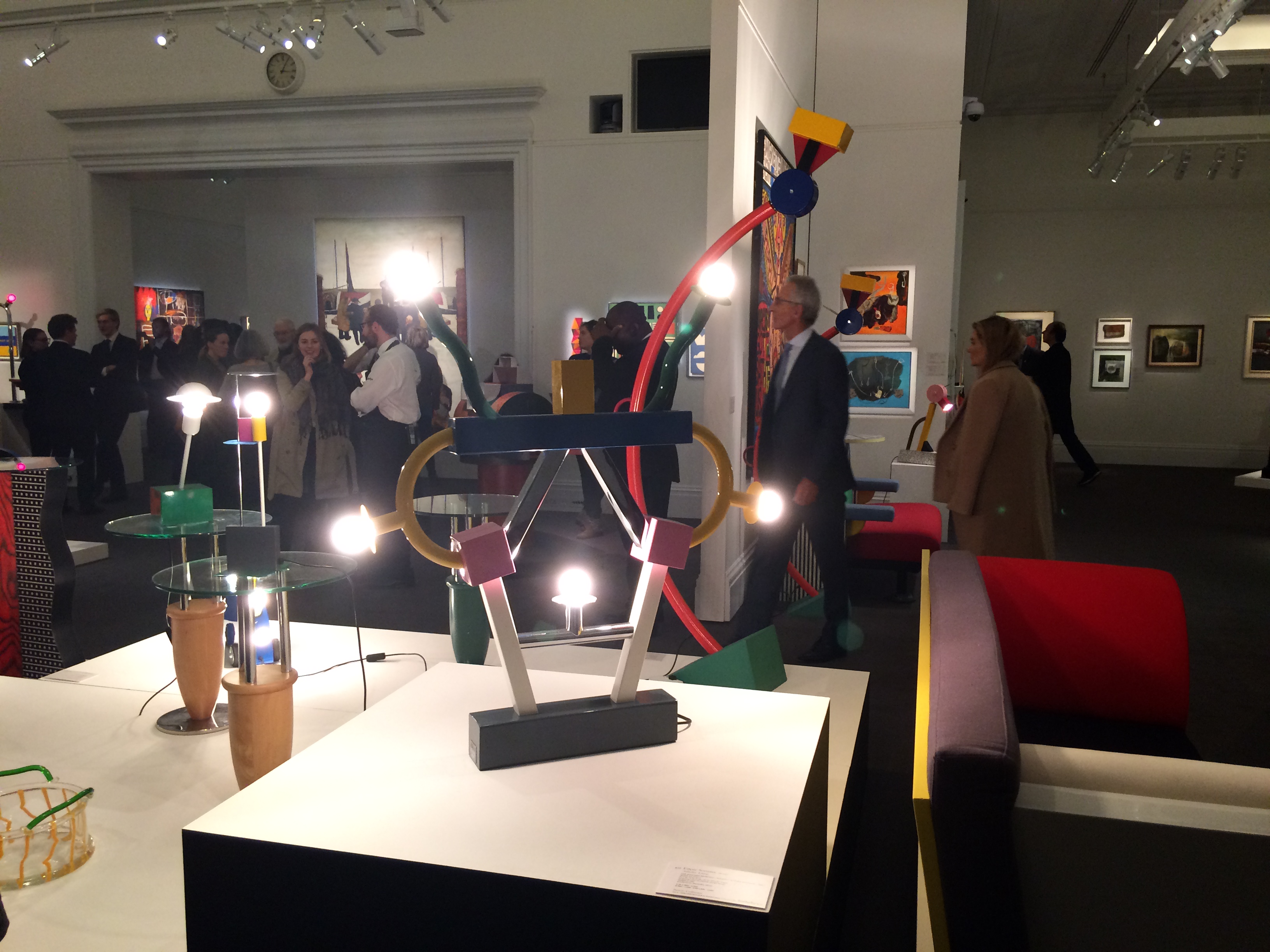Unlike many prominent exhibitions around today, David Bowie’s art collection being shown and soon to be auctioned at Sotheby's in London is unmistakably just that – a collection gathered by an individual (albeit with the help of dealers) assembled together over a number of years and therefore perhaps revealing the whims of an individual complete with the certainty that as a notable collector during the 80’s and 90’s the inconsistency of the work on show demonstrates twenty years of the life of one human being.
Granted there are infinite genres not on offer here and perhaps some will choose to categorise the art into groups including surrealism (Picabia), performance (Gilbert and George), pop art (Caulfield), minimalism (Sottass), abstract expressionism (Armitage)... I could go on – which no doubt reflect the veneer of Bowie’s own artistic life complete with the so called reinvention of his music whether it was to suit particular changes in taste or a reflection of changes within himself. There are plenty of potential theses to be written on this genre and the work on show here is far too broad and interesting to be written about in a few hundred words (even without this introduction).
Artwork shown in an auction house as well respected as Sotheby’s certainly seems to be advertised as much to the credit of the work on offer as to its provenance. Works by Damien Hirst (or his school!), Frank Auerbach, Picasso ‘s ceramic plates (produced at the famed Madoura pottery workshop in France) and many more artists will no doubt fetch high bids come auction day (and deservedly so) but i found his interest in the lesser (by my knowledge) artists here who seem to create as much energy on the canvas as their more esteemed peers.
We have the more formal art of Harold Gillman’s ‘interior (Mrs Mounter)’ whose eerie feel is offset by the bright use of colours through to artists like William Scott whose four paintings here blur the distinction between formal reality and conceptual interpretation; right through to artists like Peter Lanyon’s ‘Wittness’ and Alexander Mackenzie’s large collection of completely abstract paintings that play on the theatrical use of colour to create an illusion of movement. In this respect there is too much variation here to make any instinctive whims of the previous owner.
For all its scale of modern art from Bauhaus inspired furniture to the swirl paintings of Hirst it suggests a collector of great energy who veered towards the abstract when trying to find meaning in life. However for this reason it will attract a wide range of visitors and potential buyers for the quality of the work on show and it is unlikely that we shall be able to see such a diverse display of artwork together for a while. First impressions may not always be correct but they are most certainly valuable unfortunately there will never be an opportunity to see these items in one place again.
View full photo album here >


